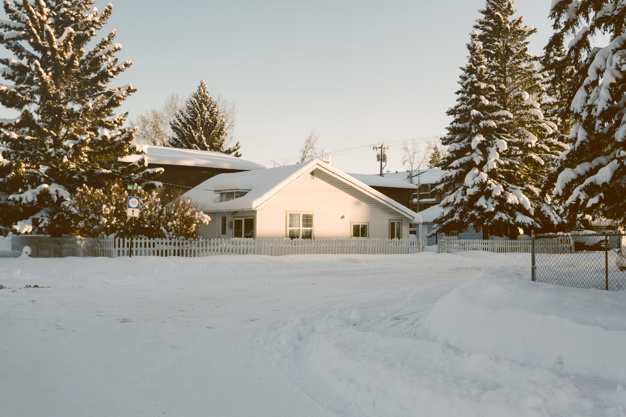January 9, 2020

If you live in a region that often sees temperatures drop to below freezing, then you’re doubtless familiar with ice dams and the damage they can cause to both your roof and your pocket. This winter season, it’s vital that your property – whether it’s your home or business premises – is protected from the dangerous and costly effects of ice dams.
How can ice dams be prevented?
There are typically 4 steps that you can take to ensure that your property isn’t at risk from an ice dam:
- Properly seal any air leaks
Sheathing temperatures can quickly lead to an ice dam on your roof, so sealing those areas where the warm air from inside the building is escaping into the attic or ceiling, is vital. Air leaks are the most common cause of a leaking roof during the winter months, but they can easily be sealed with a two-component polyurethane foam spray.
- Make sure your home is fully insulated
Check the building codes in your area to help determine whether your property has adequate levels of insulation to prevent ice damming. If you’re unable to insulate your property adequately due to structural limitations, then try to install as much polyurethane foam as you can. Additional rigid foam insulation can also be placed on top of your existing roof, if you’re having it replaced. It’s best to talk to a roofing professional before attempting to do this yourself, as any product used must be in compliance with the manufacturer’s recommendations.
- Improve ventilation
While this should never be your sole defense against ice damming, when combined with sealing any air leaks, it can be a helpful step to take, but should be done so under the guidance of a professional. Better yet, have them assess your roof thoroughly and perform any upgrades or improvements themselves to prevent any mistakes or costly damage from occurring.
- Use underlayment
Once any air leaks have been sealed and ventilation is at an optimum, you could consider covering your roof sheathing with several layers of rubberized membrane underlayment. To do this properly, the underlayment should stretch from each roof eave to a point that’s three feet higher than your exterior wall.
There are other steps that you could also take to help prevent ice damming from affecting your roof, such as framing it with raised-heel trusses, and avoiding valleys and gutters that are at, or above the roofing lane. However, none of these steps should be taken without the advice, guidance and/or assistance of a roofing expert, otherwise you may be faced with more than just the costly and dangerous effects of ice damming
 Todd Miller is President of Isaiah Industries, an organization that is recognized as one of the world’s leading metal roofing manufacturers, and manufacturer of Classic Metal Roofing Systems.
Todd Miller is President of Isaiah Industries, an organization that is recognized as one of the world’s leading metal roofing manufacturers, and manufacturer of Classic Metal Roofing Systems.